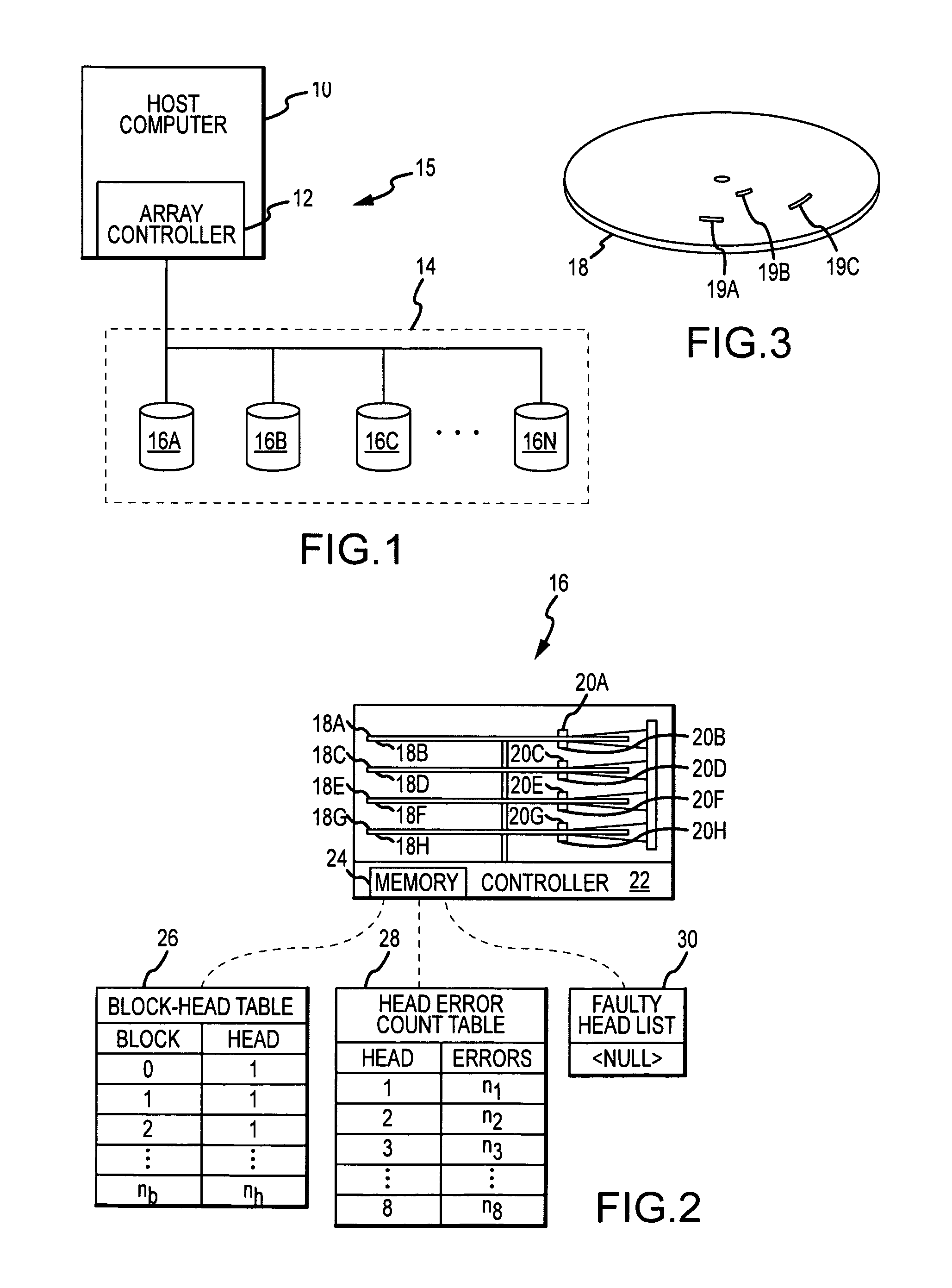Partial disk failures and improved storage resiliency
a technology of partial disk and storage resiliency, applied in the field of partial disk failures and improved storage resiliency, can solve the problems of unreliable data storage medium, inability to write or store data, and inability to allow access to data, etc., to reduce the time the spda spends in degraded mode, reduce the extent of adverse performance impact suffered, and reduce the time the spda spends
- Summary
- Abstract
- Description
- Claims
- Application Information
AI Technical Summary
Benefits of technology
Problems solved by technology
Method used
Image
Examples
Embodiment Construction
[0019]A host computer 10, array controller 12, striped parity disk array (“SPDA”) 14, and a plurality of disks 16A-16N which implement the present invention and which are collectively referred to as mass data storage system 15 are shown in FIG. 1. The array controller 12 within the host computer 10 manages the SPDA 14 formed by the plurality of disks 16A-16N to which the host computer 10 is connected. The array controller 12 presents the SPDA 14 to the host computer 10 as a single disk, even though the SPDA 14 is composed of several individual disks 16A-16N. The array controller 12 is implemented in software but may alternatively be implemented in hardware of the host computer 10.
[0020]The characteristics of each of the disks 16A-16N is represented by the single disk 16, shown in FIG. 2. The disk 16 comprises several platters, with recording surfaces or platter surfaces 18A-18H, several heads 20A-20H, a disk controller 22, and a memory 24. The heads 20A-20H service the platter surfa...
PUM
| Property | Measurement | Unit |
|---|---|---|
| mass | aaaaa | aaaaa |
| threshold | aaaaa | aaaaa |
| time | aaaaa | aaaaa |
Abstract
Description
Claims
Application Information
 Login to View More
Login to View More - R&D
- Intellectual Property
- Life Sciences
- Materials
- Tech Scout
- Unparalleled Data Quality
- Higher Quality Content
- 60% Fewer Hallucinations
Browse by: Latest US Patents, China's latest patents, Technical Efficacy Thesaurus, Application Domain, Technology Topic, Popular Technical Reports.
© 2025 PatSnap. All rights reserved.Legal|Privacy policy|Modern Slavery Act Transparency Statement|Sitemap|About US| Contact US: help@patsnap.com



